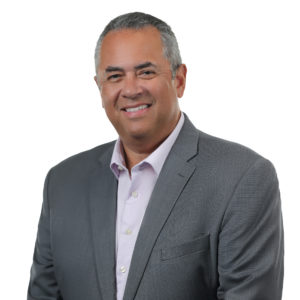Planning is the cornerstone of a successful company in the AEC industry. However, when it comes to planning an exit strategy, it is a conversation and process that is often overlooked. While there are many options to choose from, an ESOP (Employee Owned Stock Ownership Plan) may be a beneficial option for both owners and employees.
According to the National Center for Employee Ownership, there are approximately 6,600 ESOPs in place in the United States covering approximately 14 million employees. ESOPs primarily exist for small to midsize businesses with less than 250 employees, and average sales of these businesses are between $20 and $50 million. While ESOPs are prevalent in a broad range of industries, construction, manufacturing and engineering are some of the top sectors that implemented this succession planning option.
What are ESOPs?
Similar to a profit sharing plan or 401(k) plan, an ESOP is a tax qualified retirement plan that is subject to the requirements of the Employee Retirement Income Security Act of 1974 (ERISA). The main difference between an ESOP and other tax qualified retirement plans is that an ESOP must invest in the company’s stock. ESOPs offer an owner a beneficial way to reward loyal employees while transferring ownership.
How do ESOPs Work?
The business must form an ESOP trust and name a trustee who is normally independent of the business. The ESOP will purchase all or a portion of the business from the owner(s) after an appraisal of the business is performed. In many instances, the business must borrow the funds from an outside lender (external loan) and the loan proceeds immediately to the ESOP (internal loan) in order for the ESOP to purchase the shares or interest of the business. Outside lenders require this two step loan process in order to avoid compliance issues with ERISA loan requirements.
Should the purchase be partially financed with outside debt, the remaining interest could be funded by seller (owner) notes that would call for a reasonable rate of interest but be subordinated to the senior financing. Some owners find the idea of funding the ESOP through a seller’s note appealing since they receive a favorable rate of return on the note.
Similar to a contribution that a business might make to a 401(k) plan, a business is required to make a tax-deductible contribution to the ESOP annually. The contribution provides the ESOP with the funds to repay the internal loan that the ESOP has with the business. In addition to these contributions made to the ESOP, a business that is a C corporation can pay tax-deductible dividends or an S corporation can make distributions on shares of the stock held by the ESOP which can be used to pay the internal loan.
Shares purchased by the ESOP are held in a suspense account within the trust. As the ESOP pays down its internal loan with the business, shares of stock are released from the suspense account and are allocated to the separate accounts of employees participating in the ESOP.
Employees are participants in the ESOP through years of service or some other formula for participation. The longer a participant is employed by the business the greater their participation in the ESOP. Rules tend to vary, but an employee is fully vested in the ESOP as early as three years, or as long as six years.
Advantages of ESOPs
ESOPs are appealing for a number of reasons. First and foremost, ESOPs effectively create an internal market for the interest or shares of the business where one did not previously exist, offering an owner a means of liquidity.
ESOPs also offer special tax incentives subject to compliance with a number of specific rules. The contributions made by the business to the ESOP are generally tax deductible, and in many cases the owner can defer taxes on the transaction. For a shareholder of a C corporation, the gain from the sale to the ESOP can be tax-deferred by re-investing the proceeds in the securities of other domestic companies. An S corporation or partnership can also be converted to a C corporation before the sale and receive the same tax deferral. If a business stays an S corporation, there is an additional tax benefit offered by an ESOP. Because S corporation income is not taxed at the corporate level, but rather passed through to individual shareholders, any S corporation income attributable to shares held by an ESOP is not subject to federal income tax. At the employee level, the shares within the ESOP trust allocated to employee accounts accumulate on a tax-free basis until disbursement.
From a management standpoint, studies have shown that ESOP-owned businesses maintain their culture post-sale, retain their employees for a long period of time if not through the remainder of their career, and align employees’ interests with the owner’s. Having an ownership stake in the business provides motivation for employees to increase productivity and hold each accountable.
Does it Make Sense for Your Business?
An owner must take into account several considerations to ensure the longevity of the ESOP, the following are a few examples:
- Management Continuity:The business must generate enough cash to buy out the owner while maintaining its operations.
- Pre-Existing Debt: The business must consider its pre-existing debt and its related bank covenants before securing additional debt to purchase the owner’s interest.
- Appraised Value:The owner must be willing to sell their shares at an appraised fair market value to the ESOP, even if an outside investor would pay more for the potential synergies created.
- Adequate Payroll:The business is subject to limitations with how much it can contribute into its ESOP each year, and payroll must be adequate enough to cover the purchase. If the appraised value of the business is high in comparison to its payroll, an ESOP may not be a viable option.
For many owners an ESOP might be an ideal solution. If you think an ESOP might be an advantage for you and your employees please reach out to a member of our team.
Withum construction team member for further assistance.
Construction Services




